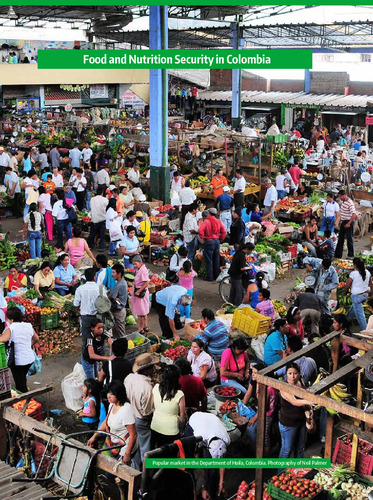Food and Nutrition Security in Colombia
As a result of its position and physiography, Colombia has an enormous diversity of climate zones, together with abundant agricultural and fresh water resources, an exceptional biodiversity and a wealth of natural resources. Its agriculture is characterized by technified monocultures by region (such as sugar cane, coffee, flowers, cotton, banana, banana, sorghum, maize, rice, African palm, potato and cassava). There are crops for domestic consumption, while highvalue crops such as coffee, sugar cane and African palm are exported.
Agriculture in Colombia will be seriously affected by climate change, both in terms of food security and agricultural socioeconomics. In relation to food and nutritional security (SAN), Colombia ranks 10th in the Food Sustainability Index and the ninth in sustainable agriculture (2016 Food Sustainability Index), and although the percentages of malnutrition have decreased, they still persist in lowincome as well as indigenous populations. A total of 12,5% of the population is undernourished. The country reflects the nutritional transition of its population, and has problems of both underweight and overweight in all the population groups.
Climate change mitigation and adaptation activities have been undertaken to address the challenges of sustainable agricultural production. Despite the current budget reduction for Science and Technology, colombian scientific and technological capacities are solid, with a long history, and there have been developments in alternative solutions to boost agricultural productivity in the diverse farming systems with territorial considerations. The aim is to boost the agricultural supply to guarantee food security and promote agricultural exports and farmers’ welfare. The many initiatives implemented include: The Colombia Plants Strategy; the Mission for the Transformation of the Colombian Countryside and the Green Growth strategy.

